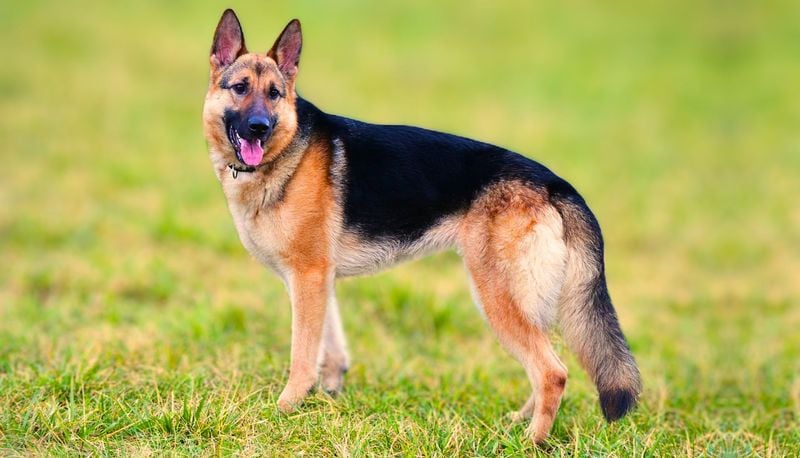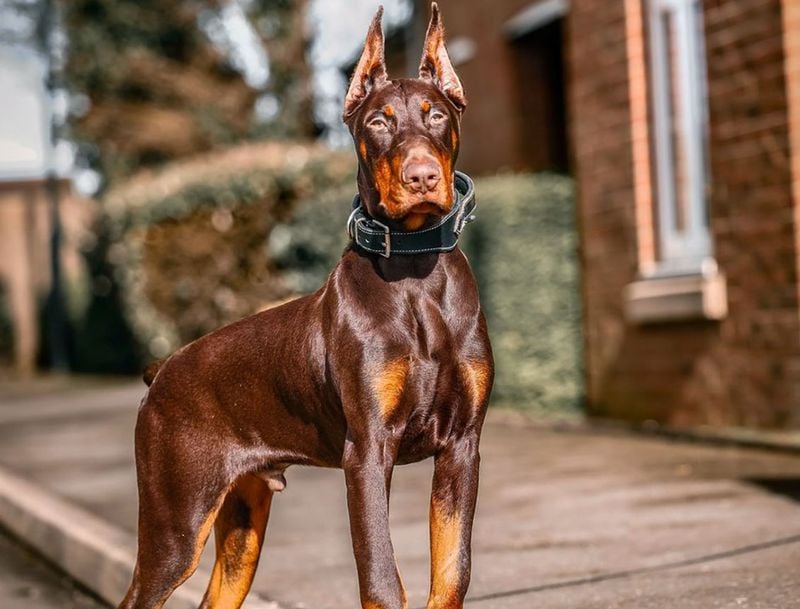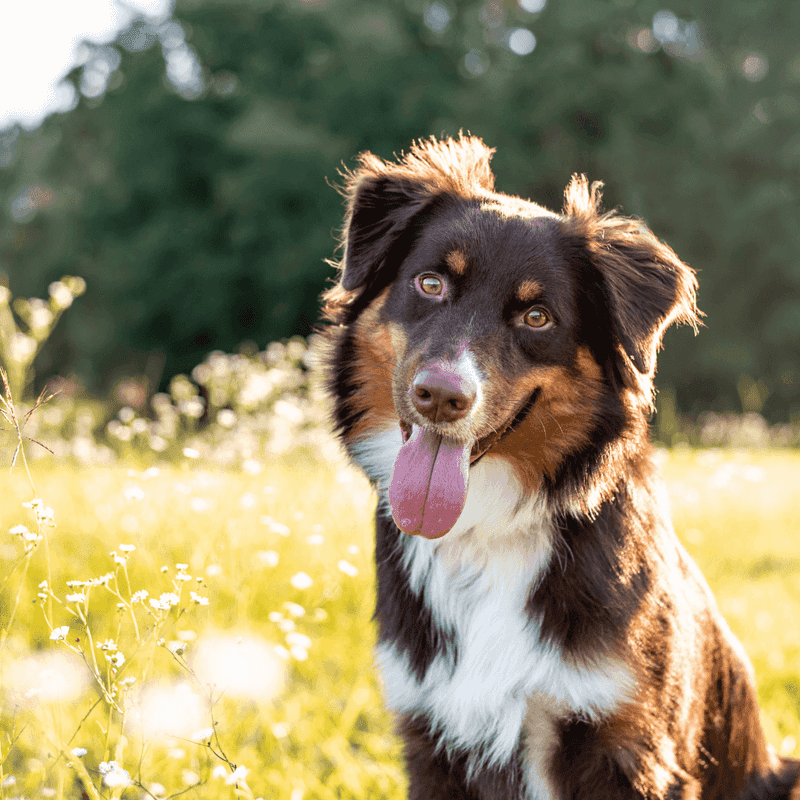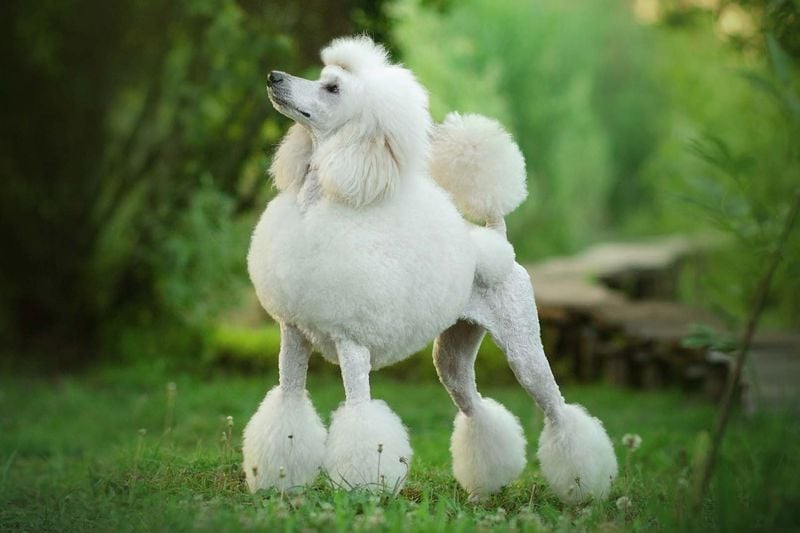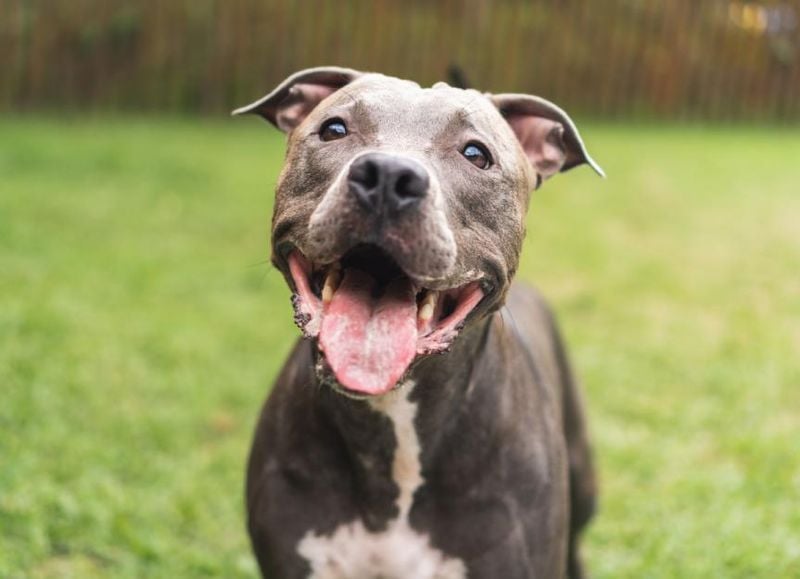These 20 Dogs Are Better at Reading People Than You Are
Dogs have been our companions for thousands of years, and during this time, they’ve developed an uncanny ability to understand human emotions. Some breeds are particularly gifted at reading our facial expressions, body language, and even detecting changes in our mood through scent. These canine mind-readers often know what we’re feeling before we do, making them exceptional emotional support animals and loyal friends.
But some dogs take it a step further. They’re not just tuned into us—they’re also incredibly perceptive when it comes to other people. Whether it’s a stranger at the door, a new friend you’re unsure about, or someone whose energy just feels “off,” these dogs are quick to pick up on what you might miss. Their instincts are sharp, their judgment solid, and their loyalty unwavering.
Here are 20 dog breeds that are particularly impressive judges of good character—trust them, they know what they’re doing.
1. German Shepherd: The Intuitive Guardian
German Shepherds possess an almost supernatural ability to sense emotions. Their intense focus allows them to detect subtle changes in your body language, voice, and even your breathing patterns.
Law enforcement agencies worldwide rely on these dogs not just for their physical capabilities but for their emotional intelligence. They can distinguish between someone who’s nervous because they’re hiding something and someone who’s simply afraid.
German Shepherds form deep bonds with their families, often appointing themselves as emotional guardians. They’ll quietly appear at your side when you’re sad, offer playful distraction when you’re stressed, and stand alert when they sense potential danger to their loved ones.
2. Border Collie: The Emotional Mathematician
Ranked among the most intelligent breeds, Border Collies don’t just understand commands—they read your intentions before you speak. These remarkable dogs process emotional information with computer-like precision, remembering which expressions mean what.
A Border Collie owner once told me her dog could tell the difference between her ‘going to work’ face and her ‘going to the park’ face with 100% accuracy. This breed’s empathetic abilities developed from centuries of working closely with shepherds, where survival depended on understanding human signals.
They’ll study your face intently, gathering emotional data points that most humans would miss completely. Their emotional vocabulary is so sophisticated they can distinguish between genuine and forced smiles.
3. Golden Retriever: The Sunshine Empath
Golden Retrievers come equipped with built-in emotional radar systems. These golden-haired empaths seem to know exactly when you need comfort, often pressing their warm bodies against you during moments of distress without being called.
Their emotional intelligence explains why they excel as therapy dogs in hospitals and nursing homes. A fascinating study showed Goldens can detect cortisol (the stress hormone) levels in humans through scent alone, allowing them to identify anxiety before visible signs appear.
What makes their people-reading abilities exceptional is their balanced response—they won’t overreact to your emotions but provide precisely what you need: space when you’re irritated, playfulness when you’re down, or gentle companionship when you’re anxious. Their emotional intelligence operates with remarkable nuance.
4. Labrador Retriever: The Mood Detective
Labs possess an extraordinary talent for emotional detection that makes them invaluable service animals. Their ability to sense impending anxiety attacks, blood sugar changes, and seizures demonstrates their remarkable sensitivity to human physiological shifts.
These canine detectives constantly scan their environments for emotional cues. Watch a Lab in a room full of people—you’ll notice their eyes tracking facial expressions, their ears adjusting to voice tones, and their bodies responding accordingly.
Their emotional intelligence comes with perfect timing. Labs know exactly when to intervene with a gentle nudge or when to simply place their head on your lap. This intuitive understanding of human emotional needs makes them exceptional companions for children with autism and adults with PTSD.
5. Doberman Pinscher: The Vigilant Mind-Reader
Behind those alert eyes lies one of the animal kingdom’s most sophisticated emotional processors. Dobermans can detect a threat from subtle body language cues that most humans would completely miss, making them exceptional protectors.
Their sensitivity extends beyond protection. Doberman owners frequently report their dogs responding to unspoken emotional states—bringing toys when they sense sadness or standing guard when they detect anxiety. This breed’s ability to distinguish between genuine visitors and those with questionable intentions borders on psychic.
A Doberman’s emotional perception operates on multiple channels simultaneously: they process visual cues, scent markers, and vocal tones to create a complete emotional profile of everyone they encounter. Their reputation as intimidating guard dogs often overshadows their remarkable emotional intelligence.
6. Belgian Malinois: The Emotional Tactician
Military and police units worldwide choose Belgian Malinois for their extraordinary ability to read human intentions. These dogs can detect deception through subtle changes in breathing patterns, microscopic facial movements, and even the chemical signatures of sweat.
Their emotional intelligence operates with tactical precision. A Malinois doesn’t just know you’re afraid—they know exactly why and how to respond appropriately. This breed can distinguish between someone who’s nervous because they’re hiding something and someone who’s nervous because they’re uncomfortable around dogs.
The Belgian Malinois processes emotional information with such sophistication that they can follow complex emotional threads through crowds. They might track not just a person’s scent but their emotional state as it changes throughout an environment—a skill that makes them invaluable in search and rescue operations.
7. Rottweiler: The Stoic Emotional Guardian
Don’t let their imposing appearance fool you—Rottweilers possess exceptional emotional sensitivity beneath their powerful exterior. These dogs monitor their family’s emotional states with unwavering attention, often positioning themselves strategically between their loved ones and perceived sources of stress.
Rottweilers exhibit a unique emotional memory that allows them to remember how specific people made their owners feel. They might remain cautious around someone who once caused anxiety, even years later. Their protective instincts are guided by sophisticated emotional processing rather than simple aggression.
What makes their people-reading abilities remarkable is their measured response. A Rottweiler won’t overreact to temporary emotional shifts but will respond appropriately to genuine distress. They seem to understand the difference between momentary frustration and true emotional need.
8. Australian Shepherd: The Emotional Forecaster
Australian Shepherds don’t just read current emotions—they predict emotional shifts before they happen. These canine forecasters notice subtle changes in your breathing, posture, and scent that signal an impending mood change.
Their herding background equipped them with extraordinary sensitivity to intention. Australian Shepherds can detect when you’re about to get up, leave a room, or change activities based on nearly imperceptible physical cues. This predictive ability extends to emotional states—they often respond to your feelings before you’ve fully processed them yourself.
Aussie owners frequently report their dogs bringing toys before they realized they were sad or herding family members together when tension was building. Their ability to anticipate emotional needs makes them exceptional therapy dogs and family companions who seem to know what you need before you do.
9. Boxer: The Emotional Comedian
Boxers possess a unique form of emotional intelligence—they know exactly when humor is the best medicine. These canine comedians can sense when their humans need emotional lifting and will perform their goofiest antics precisely when needed most.
Their emotional radar is remarkably accurate. Boxers can distinguish between tears of sadness and tears of joy, responding differently to each. When you’re truly upset, they’ll abandon their playful demeanor for gentle, calming presence.
Boxer owners often marvel at their dog’s ability to match energy levels perfectly to the emotional climate of the home. They seem to understand the emotional weight of different situations, knowing when to provide comic relief and when quiet companionship is needed instead. Their emotional versatility makes them exceptional family dogs.
10. Akita: The Dignified Emotion Analyst
Akitas approach emotional reading with remarkable dignity and discretion. Unlike more demonstrative breeds, these noble dogs observe human emotions quietly, processing complex emotional information before responding.
Their emotional intelligence operates with cultural sensitivity. Originally bred to guard Japanese royalty, Akitas developed the ability to read subtle emotional cues without requiring obvious signals. They can detect shifts in your emotional state through changes in your scent that are imperceptible to humans.
What makes their people-reading abilities extraordinary is their respectful response. An Akita won’t invade your emotional space but will maintain a protective, supportive presence during difficult times. They seem to understand the concept of emotional boundaries, offering comfort without overwhelming you—a sophisticated emotional approach that many humans haven’t mastered.
11. Siberian Husky: The Emotional Conversationalist
Huskies don’t just read emotions—they respond vocally with an extensive range of sounds that match your emotional state. Their howls, whines, and unique “talking” adapt to the emotional tone of the household with remarkable precision.
These vocal communicators can distinguish between different types of emotional distress and will adjust their responses accordingly. A Husky might offer playful distraction when you’re mildly annoyed but provide quiet companionship during deeper emotional struggles.
Their emotional intelligence includes a sophisticated understanding of family dynamics. Huskies often position themselves as emotional mediators during family conflicts, using their vocalizations and physical presence to defuse tension. Their ability to “talk back” creates a sense of emotional dialogue that many owners describe as almost human-like.
12. Standard Poodle: The Aristocratic Emotion Interpreter
Behind those elegant curls lies one of the most sophisticated emotional processors in the canine world. Standard Poodles don’t just detect emotions—they analyze them with remarkable precision, distinguishing between genuine feelings and social performances.
Their intelligence allows them to recognize emotional patterns over time. A Poodle might notice you get anxious every Sunday evening before the work week or become melancholy on certain anniversaries. They’ll adjust their behavior accordingly without being prompted.
Standard Poodles excel at reading multiple people simultaneously, making them exceptional therapy dogs in group settings. They can identify which person in a room needs emotional support most urgently. Their emotional discernment operates with such sophistication that they can distinguish between chronic depression and temporary sadness, offering different types of support for each.
13. Great Dane: The Gentle Emotional Giant
Great Danes possess emotional sensitivity that seems almost contradictory to their massive size. These gentle giants can detect anxiety and fear in humans with extraordinary accuracy, often responding by making themselves appear smaller and less intimidating.
Their emotional intelligence includes remarkable situational awareness. Great Danes understand that their size can be overwhelming and will adapt their physical presence based on the emotional comfort level of those around them. They’ll approach children and nervous adults with deliberate gentleness.
What makes their people-reading abilities special is their calming influence. Great Danes seem to understand that their steady, quiet presence can anchor someone experiencing emotional turbulence. They’ll press their large bodies against anxious owners, creating a living weighted blanket effect that many find immediately soothing.
14. American Pit Bull Terrier: The Misunderstood Empath
Pit Bulls possess extraordinary emotional sensitivity that often surprises those unfamiliar with the breed. These muscular empaths can detect emotional distress with remarkable accuracy, often responding with gentle physical contact precisely calibrated to the situation.
Their emotional intelligence includes exceptional patience with vulnerable individuals. Pit Bulls can distinguish between those who need special emotional handling—like children, elderly people, or those with disabilities—and will adjust their energy levels accordingly. Their responsiveness to emotional needs makes them exceptional therapy dogs.
What makes their people-reading abilities remarkable is their emotional resilience. Despite often coming from difficult backgrounds themselves, Pit Bulls maintain an uncanny ability to trust and respond positively to human emotions. They seem to understand emotional healing, often providing comfort to humans experiencing the same types of trauma they’ve overcome.
15. Chihuahua: The Pocket-Sized Emotional Detector
Don’t be fooled by their tiny stature—Chihuahuas possess emotional radar systems of extraordinary sensitivity. These miniature mind-readers can detect microscopic changes in your facial expressions that even trained human psychologists might miss.
Their size actually enhances their emotional perception. Chihuahuas spend much of their time looking up at human faces, giving them a unique perspective on subtle emotional cues. They’re particularly attuned to eye movements and microscopic facial muscle contractions that signal emotional shifts.
Chihuahua owners often report their dogs responding to emotions they haven’t even expressed externally yet. These tiny detectors can sense anxiety, sadness, or excitement brewing beneath the surface. Their tendency to become protective or vocal often stems from their acute awareness of emotional undercurrents that others miss completely.
16. Shiba Inu: The Emotional Independent
Shibas approach emotional reading with characteristic Japanese restraint. Unlike more obvious emotional responders, these fox-like dogs observe human feelings with careful consideration before deciding how to react.
Their emotional intelligence operates with remarkable independence. A Shiba won’t automatically mirror your emotions like some breeds but will evaluate whether your emotional state requires intervention. They seem to understand that not all emotional displays need a response.
What makes their people-reading abilities fascinating is their selective engagement. Shibas can distinguish between performative emotions and genuine feelings, often ignoring the former entirely. They’ll maintain emotional distance when they sense manipulation but provide quiet support during authentic distress. This emotional discernment gives them an almost cat-like quality that many owners find refreshingly sophisticated.
17. Cane Corso: The Ancient Emotional Sentinel
Descended from Roman war dogs, Cane Corsos possess emotional reading abilities refined over millennia. These powerful guardians don’t just detect emotions—they evaluate them for potential threats to their family’s wellbeing.
Their emotional intelligence operates on a protective frequency. Cane Corsos can distinguish between a visitor’s normal nervousness and suspicious intentions through subtle behavioral cues and scent markers. They process emotional information through an ancient filter that prioritizes family security.
What makes their people-reading abilities remarkable is their historical depth. These dogs carry emotional wisdom passed down through countless generations of working alongside humans in high-stakes situations. A Cane Corso seems to understand not just current emotional states but their implications—they know the difference between momentary fear and genuine danger.
18. Cavalier King Charles Spaniel: The Royal Emotion Companion
Cavaliers were bred specifically to respond to human emotional needs, and centuries of selective breeding have created emotional specialists of remarkable sensitivity. These gentle companions can detect shifts in your mood through changes in your breathing patterns and heart rate.
Their emotional intelligence centers on comfort. Cavaliers know exactly how much physical contact to provide based on your emotional state—a gentle paw during mild stress or full body pressure during deeper distress. They seem to understand the healing power of touch.
What makes their people-reading abilities special is their adaptive response. Cavaliers adjust their energy levels to match your emotional state with remarkable precision. They’ll become playful when you need distraction or quietly contemplative when you need calm. This emotional mirroring creates a sense of being truly understood that many owners find profoundly therapeutic.
19. Mastiff: The Ancient Emotional Sage
Mastiffs bring thousands of years of human observation to their emotional reading abilities. These gentle giants process emotional information with the wisdom of an ancient breed that has witnessed the full spectrum of human experience throughout history.
Their emotional intelligence operates with remarkable patience. Mastiffs won’t react to temporary emotional fluctuations but will respond with appropriate gravity to significant emotional events. They seem to understand the difference between fleeting feelings and profound emotional needs.
What makes their people-reading abilities extraordinary is their historical perspective. These dogs, whose ancestors guarded ancient civilizations, appear to evaluate emotions through a timeless lens. A Mastiff won’t overreact to modern stressors but will provide steadfast support during truly difficult times. Their emotional presence carries a weight and dignity that many owners describe as almost ancestral.
20. Beagle: The Scent-Driven Emotion Tracker
Beagles bring their legendary noses to emotional detection, reading your feelings through scent markers imperceptible to humans. These scent hounds can detect chemical changes in your sweat and breath that signal emotional shifts before you’re consciously aware of them.
Their emotional intelligence operates primarily through olfactory processing. Beagles can distinguish between different types of stress through scent alone—they know the difference between the adrenaline of excitement and the cortisol of anxiety. This scent-based emotional reading gives them a unique perspective on human feelings.
What makes their people-reading abilities fascinating is their honest response. Beagles won’t hide their reactions to your emotional state—they’ll respond with authentic concern or joy. Their emotional transparency creates a refreshingly straightforward emotional dialogue that many owners find more genuine than their interactions with other humans.

